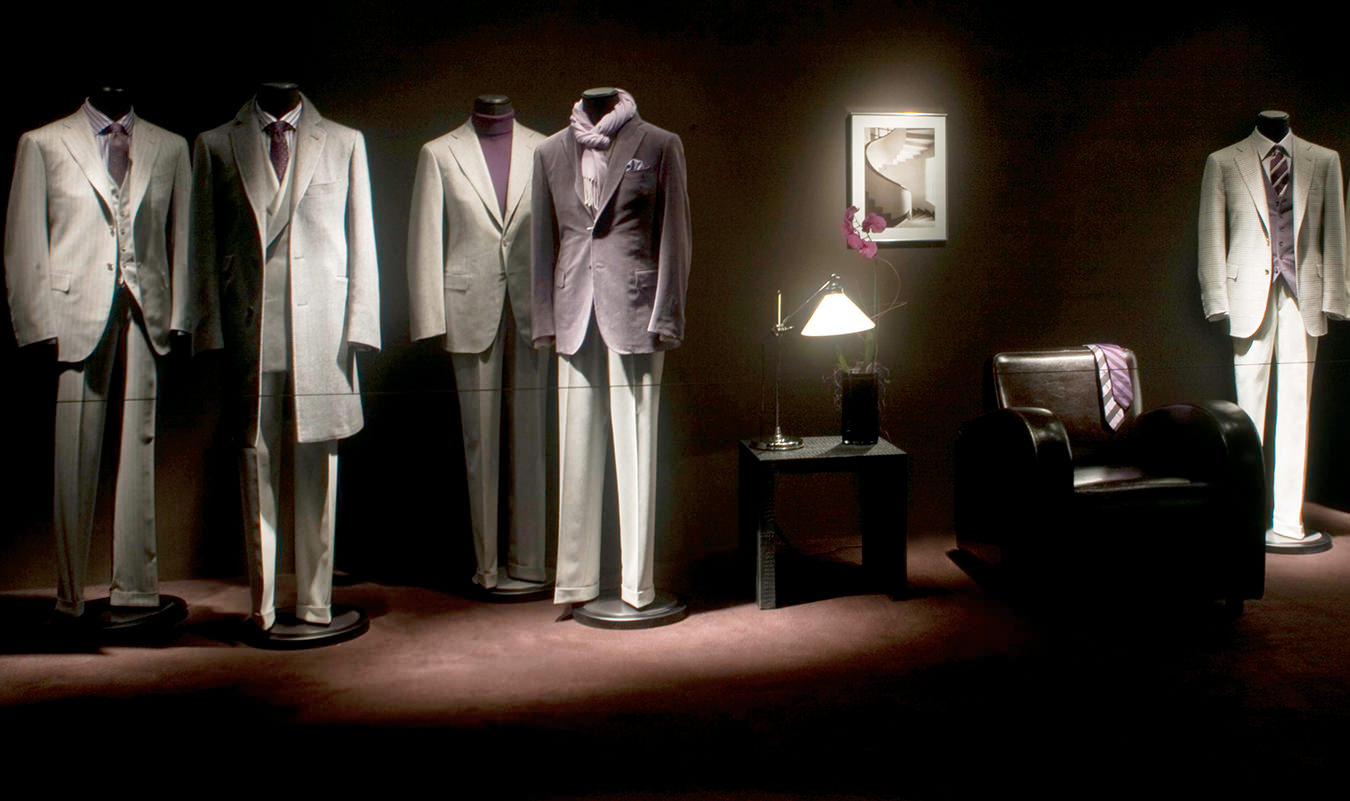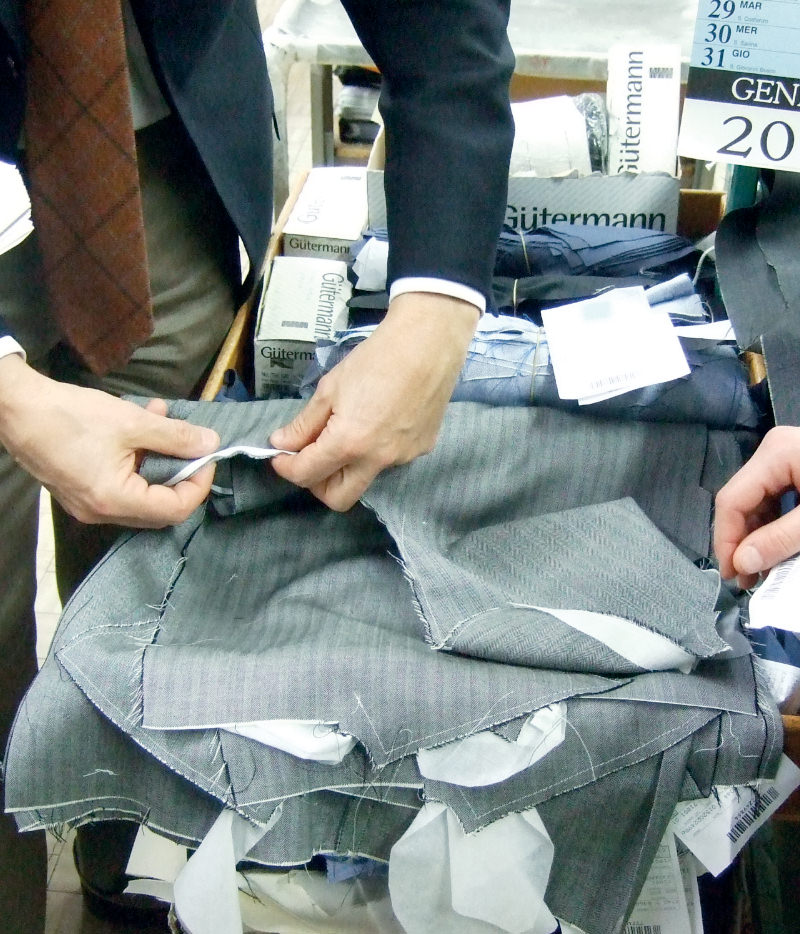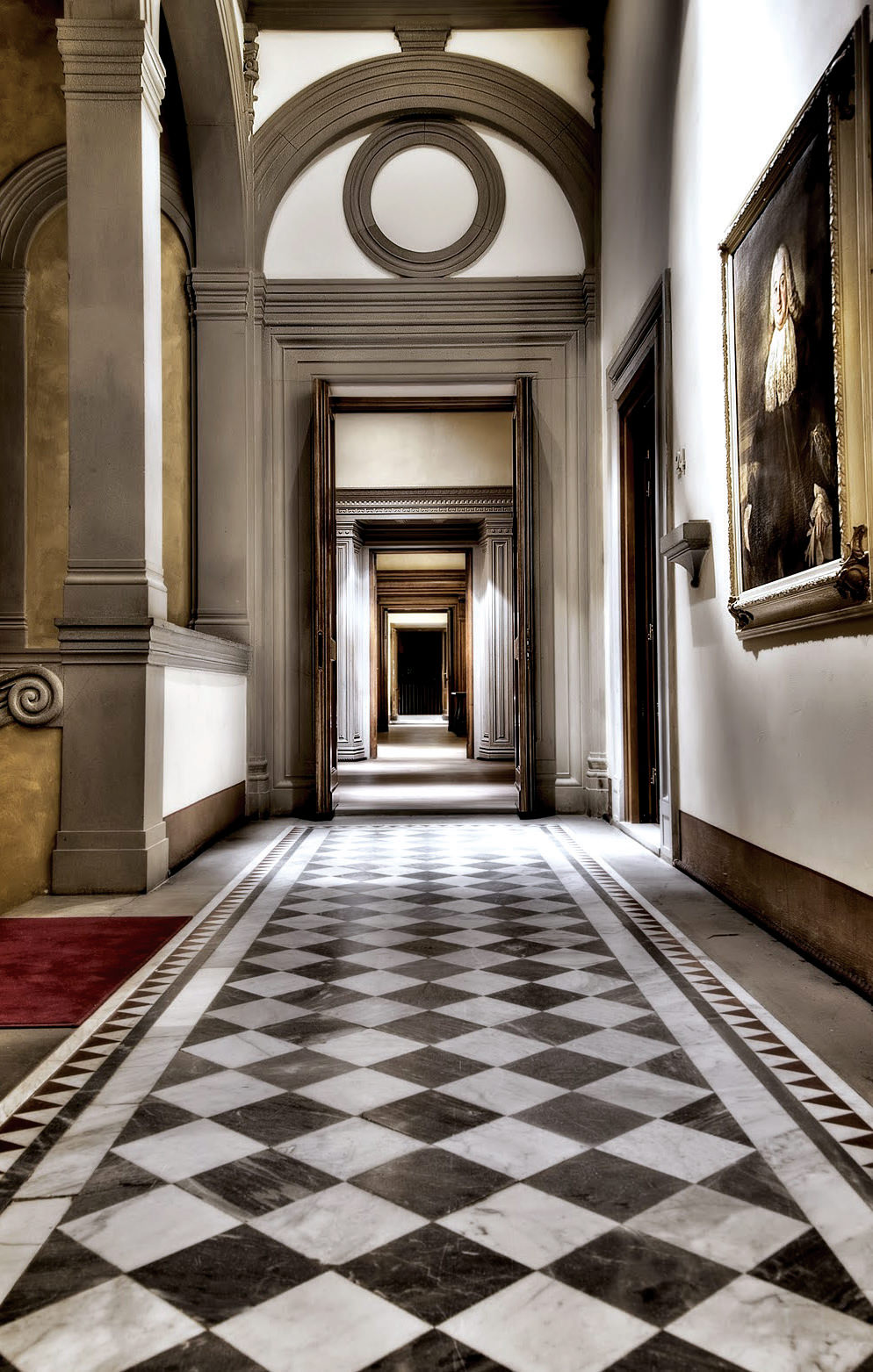The Suits of Pal Zileri
The Italian fit.
The road from Venice to Milan passes by Vicenza, city of Andrea Palladio, the Renaissance architect known for his thoughtful alliance of disciplined lines and sensual curves. About 10 kilometres east, sized somewhere between a small town and a large village, is Quinto Vicentino. Wrought-iron gates swing open onto a side street, and a man in a hat crosses a flagstoned courtyard: Gianfranco Barizza, president and one of the founding partners of Pal Zileri. From a group made up of him and similarly minded young men has evolved one of Italy’s leading menswear companies, and a label known for its traditional craftsmanship and contemporary style.
The birth of the menswear line goes back to the 1960s, says Barizza.“Italy was still in crisis post-war, especially in this region, for work, for opportunities. We were eight young men. We had dreams—we said, ‘If we don’t try now, we’ll never do it.’ ” By combining their expertise in tailoring, fabrics and finance, they succeeded, to the point where, in 2007, revenue for the 850-employee Gruppo Forall (of which Pal Zileri is the dominant line) was €131-million.
Over the last 40 years, says Barizza, the traditional suit has changed little in its construction. “The sewing machine is the same as we had at the beginning,” he says, and in terms of style, “it’s difficult to go more casual than it is now.” Where the revolution lies is in fabrics. A sample of one of the first jackets with a Pal Zileri label still exists, sewn from upholstery cloth, says Marco Barizza, son of Gianfranco, who worked his way up from a warehouse position to CEO. Even discounting the garment’s vintage cut and flamboyant saffron-and-plum pattern, what places it firmly in another era is fabric so rigid that the jacket could almost stand up on its own. Since then, heavy padding has also slimmed down; pants have lost their pleats and lowered their waists. The suit that, 30 years ago, was a bulldog has evolved into a greyhound.
Pal Zileri’s sole focus on menswear, and its Lab line geared to a younger, metro-chic audience, set it apart from competitor labels, says Marco Barizza. He also feels the company offers “something more from a creative point of view”. Manufactured entirely in Italy, the flagship Sartoriale Collection and the White Label line—both of which can be made to measure—share a quintessentially Italian fit: lean, flattering and close to the body.
Over the years, the company added topcoats, and shirts and ties in the 1980s. Subsequent decades saw the inclusion of shoes, sportswear, cologne and beachwear; underwear is scheduled to launch later this year. The result is the pitch-perfect coordination exemplified by a pinstriped dark-taupe jacket teamed with a shirt in fine espresso and white stripes and a dark-brown-and-white paisley tie. Each season has a theme, brand manager and designer Guido Tara explains. Venice is the inspiration for Fall/Winter 2008, symbolized by browns that recall the last days of summer warmth, smoke and ash hues that conjure up waters lit by winter sunsets, and the mysterious blues subtly embellished with muted ruby red and wine, evocative of carnivale. “Jackets have a new creativity,” he says, citing linings, under-collars and elbow patches in delicately contrasting colours.
There are 50 Pal Zileri boutiques around the world, and the company sells in over 70 countries. The growth reflects global change, with made-to-measure business now huge in India, sales in Russia ahead of those in North America, and six shops in Dubai alone. Massive numbers unquestionably, but the foundation remains famiglia. Marketing director Manuela Miola, who is also the daughter of one of the original founders, explains that having eight people involved at the beginning prevented the use of a single name. As a result, the group chose Zileri, the surname of a deep-rooted family from the Veneto region, and “adding Pal because it means friend in English and sounds like a name”.
Toronto-based Michael Fazzari, who, along with his son Paul, now distributes the line to 30 menswear shops across Canada, knew a need existed for clothing that combined stellar quality with fashion. “When I began representing the Pal Zileri label [in Canada] in 1999,” he says, “the product was carried in only three or four retail stores across the country. I remember the first season I brought the samples into the showroom, the range of fabrics and silhouette options, the styling and coordination—it was all so fresh and exciting in comparison to what was out there. As it does today, the product really stood out and I didn’t have to twist many arms. Finally, here in Canada, there was life beyond the grey, blue and black suit.” Fazzari says that retailers still comment on “how the Pal Zileri suit makes their clients look and feel younger, have more confidence in themselves, and most importantly get excited about putting on a suit”.
“Canadians like suits a little bit more comfortable than Italians, but only in the chest,” says Pal Zileri’s master tailor, Bruno Magnaguagno, who, each fall, crosses Canada with the equivalent of a made-to-measure trunk show. Born in Vicenza and adept with needle and thread since the age of 14, Magnaguagno grew up with a mother who was a tailor. “In my life, always I see fabric around me,” he says, adding that he suspects northern Italy’s long-held reputation for fine tailoring is genetic. “It’s been our background for many, many generations. In this area, it’s normal for us to see Palladian architecture”—and the brain, he says, makes the next logical step.
Modern fabrics are extremely luxurious, with some blends incorporating minute fragments of diamond or lapis lazuli. Pure cashmere and vicuña are butterfly-light, demanding new words for softness; Yangir is spun from the coat of a wild Mongolian goat. It’s not just because Pal Zileri dresses the Ferrari team that Magnaguagno compares certain fabrics to Italian sports cars; one suit he made from vicuña-pashmina striped with real platinum cost close to a third of the price of a new F430 Scuderia. But whether crema della crema or simple pure wool, the trend is toward the lightweight and natural, he says, and that includes the hidden structural foundations of canvas and horsehair, silk-like cotton linings and linen under-collars.
The genesis of a flawlessly fitted suit is a checklist of 53 basic alterations that covers everything from jacket length to shortening the back of a vest so that it hangs correctly.
“Our system starts with an old idea. We take the tape measure…” he says as he assesses, pins and adjusts. The genesis of a flawlessly fitted suit is a checklist of 53 basic alterations—17 more are available for particular needs—on the made-to-measure order form that covers everything from jacket length to the “super-erect posture” that necessitates shortening the back of a vest so that it hangs correctly. The end result is an architectural blueprint that combines physical measurements with personal preferences. “We ask the customer, a little bit short? A little bit narrow?” says Magnaguagno. A customer’s shoulder slopes a little? That’s normal, he reassures: only five per cent of men have perfectly straight shoulders. The goal is a second, exquisitely fitted skin. Traditional, yes, but infused with modernity. (And it’s no coincidence that this mandate matches the effortless style, subtle interpretation and classical roots of Canadian jazz singer Matt Dusk, the new face of Pal Zileri worldwide.)
If unrolled bale by bale along the highway between Venice and Milan, the fabric in the Gruppo Forall warehouse would cover it well over three layers deep. Inventory is vast, and stores can check online to see if a particular wool or silk is available. The computer-generated pattern created from the made-to-measure checklist indicates fabric quantity and where pattern pieces fit. But while an electronic bar code monitors progress, the human eye may override technology right from the start when, for absolute accuracy, striped and checked fabrics are cut first by machine, then by scissors.
The emerging garment passes from hand to hand in a factory that, though colossal, is the opposite of mass production; it’s less a panorama than a series of vignettes as darts are secured, armholes are bound and a tiny cut is made to indicate the site of a breast pocket. Invisible stitching holds fabric and canvas for a lapel. (Lifting a lapel away from its backing is a sure way to identify quality; fabrics are fused together on cheaper suits.) Side seams are exactly 17 millimetres; an employee can decide to move a seam two millimetres (a distance slightly more than a loonie’s thickness) but no more than that without asking permission. As the jacket reaches the midpoint of its construction, dimensions are checked. “Tolerance? Zero,” says Magnaguagno.
Precise and exact are his watchwords. A worker removes individual threads from the front of a striped jacket, and then trims the resulting fringes so that the sides match. Nearby, her colleague cuts two layers of extraneous canvas from inside a jacket front. The lapel is attached to the body, with careful adjustment of “sometimes less than one millimetre—but you need absolute accuracy”, says Magnaguagno.
In this world of painstaking subtleties, fabric is gently persuaded into position. Jacket backs are slightly wider than fronts to accommodate shoulder blades; attaching sleeves involves combining different circumferences. “The system is just the same as in a tailor’s shop years ago,” says Magnaguagno, who ran his own in Vicenza for 19 years before joining Pal Zileri in 1995. “It’s a big factory with a family mentality. You can work at home when you want.” He indicates canvas-covered suit racks identified with recipients’ names, ready to go out to Margherita Sambugaro, Michela Schiavon and the 78 other women who stitch suits by hand.
And so the building of the jacket continues, with the head of the sleeve pressed to take on the desired rounded form, the lining attached, the long white temporary stitches removed and measurements and overall appearance checked one last time. The finished garment is transported to another building where “the jacket arrives. The trousers [made elsewhere] arrive. And,” the master tailor concludes triumphantly, “it will be a suit.”
As Bruno Magnaguagno joins two dozen co-workers in the company canteen, where long tables are set with carafes of wine and water and platters of fruit, he jokes, “Lunch is also made-to-measure.” Risotto, vegetables, salad, rosemary chicken, grilled sausage and pizza are brought around. All who work here have the same choices, the cost subsidized by the company. Gianfranco Barizza has sat at the head of the table since 1972. Now, he says, pride evident in his smile, “I am happy to have young people look after the company. I’m keen to see what they can do.”
Miola says, “They created this baby, and this baby grew with them. Employees were treated as family right from the start. This was the spirit of the company at the beginning. And after 37 years, it’s still like that.” The annual pre-Christmas salute to staff who have passed their 25-year mark usually recognizes as many as 15 people. Miola says the factory was “in the middle of nothing” when Pal Zileri began making its first suits, so the company organized a private bus service, built apartments for employees and opened a canteen. The first children who attended the company nursery are now old enough to have children of their own. It’s important to have time for your family, she adds, so lunch is just one hour—short by Italian standards—enabling employees to work a schedule that aligns with taking care of home and kin.
This appreciation for the value of famiglia is the keystone of the company. Surrounding it are the regional tradition of meticulous tailoring and the innate appreciation of line and contour that comes from living in a part of northern Italy renowned for its architecture. In a Pal Zileri suit, it all gets stitched together.







